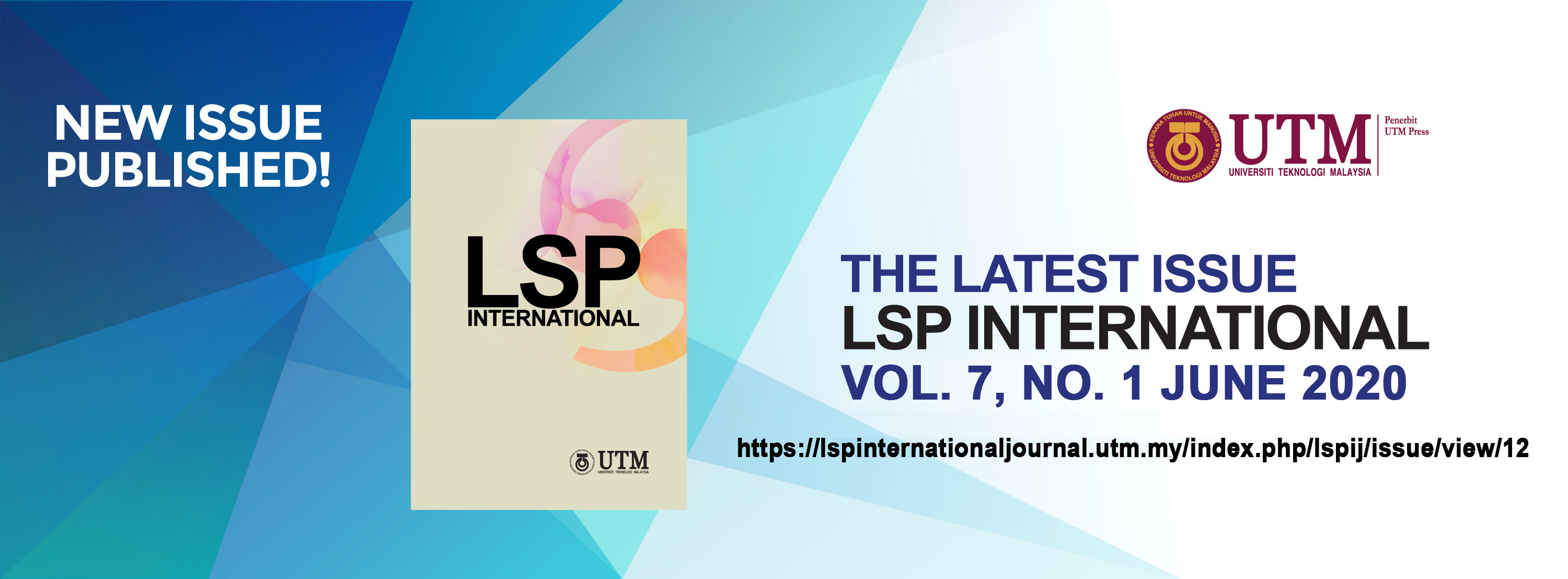Innovative Flipped Classroom Approach for TESL Subjects: From Students’ Perspective
DOI:
https://doi.org/10.11113/lspi.v7n1.102Abstract
The importance of active learning and higher order thinking skills among students at higher learning institutions have steered lecturers to employ the flipped classroom approach in their classes. The move is hoped to assist students to become active recipients of knowledge and break away from the traditional learning method where knowledge is only imparted by lecturers. A study was conducted to investigate: (1) the TESL students’ ability to research and present their findings related to a teaching method via group posters when the flipped classroom approach is utilized in their Methodology in TESL 1 subject, and (2) their views on the feasibility of using flipped classroom approach for other TESL subjects. This study had adopted the mixed method approach in which an interview guide was used to address the first research question and a questionnaire was used to address the second research question. From the interview, it is found that majority of the TESL students had managed to research the teaching method assigned to them, had understood what they were reading, and were able to present the teaching method in the form of a poster. From the questionnaire data, it was found that majority of the TESL students agreed the flipped classroom approach can be implemented for other TESL subjects although a few of them felt that it might only be suitable for certain topics or subtopics as they were afraid of inaccurate knowledge being transferred if there is no proper guidance from the lecturer. Nevertheless, for this study, it can be concluded that the flipped classroom approach had enhanced the students’ understanding of the given topic, and it is feasible for other TESL subjects.
References
Andujar, A., Salaberri-Ramiro, M. S and Crúz Martínez, M. S. 2020. Integrating Flipped Foreign Language Learning through Mobile Devices: Technology Acceptance and Flipped Learning Experience. Sustainability, 12, 1110.
Bell, M. R. 2015. An Investigation of the Impact of a Flipped Classroom Instructional Approach on High School Students' Content Knowledge and Attitudes Toward the Learning Environment. All Theses and Dissertations. Paper 4444.
Cornell Center for Materials Research. (n.d.). Scientific Poster Design. Retrieved on December 5, 2016, from http://www.ccmr.cornell.edu.
Creswell, J. W. 2012. Educational Research: Planning, Conducting and Evaluating Quantitative and Qualitative Research. 4th Ed. Pearson Education, Inc. Boylston Street, Boston, MA 02116.
Creswell, J. W., and Plano Clark, V. L. 2011. Designing and Conducting Mixed Methods Research. Thousand Oaks, California, USA: Sage.
Creswell, J. W., and Plano Clark, V. L. 2011. Designing and Conducting Mixed Methods Research. Thousand Oaks, California, USA: Sage.
Danker, B. 2015. Using Flipped Classroom Approach to Explore Deep Learning in Large Classrooms. The IAFOR Journal of Education. 3(1): 171-186.
Donnelly, R. 2009. Harmonizing Technology with Interaction in Blended Problem-based Learning. Computers and Education. 54(2), 350-359.
Doi:10.1016/j.compedu.2009.08.012.
Flipped Learning Network (FLN). 2014. The Four Pillars of F-L-I-P™ Gannod, G., Burge, J. and Helmick, M. 2008. Using the Inverted Classroom to Teach Software Engineering. Paper Presented at the Meeting of the 2008 IEEE International Conference of Software Engineering, Leipzig, Germany.
Grapragasem, S., Krishnan, A. and Mansor, A. N. 2014. Current Trends in Malaysia Higher Education and Effect of Education Policy and Practice: An Overview. International Journal of Higher Education. 3(1): 85-93.
Kawinkoonlasate, P. 2019. Integration in Flipped Classroom Technology Approach to Develop English Language Skills of Thai EFL Learners. English Language Teaching. 12(11): 23-34.
Lage, M. J., Platt, G. J., and Treglia, M. 2000. Inverting the Classroom: A Gateway to Creating an Inclusive Learning Environment. Journal of Economic Education. 31(1): 30-43. http://dx.doi.org/10.2307/1183338.
Miragall, M., & García-Soriano, G. 2016. Transforming a Class from the Psychology Degree into a Flipped Classroom. @ tic. revista d'innovació educative. 17: 21-29.
Oral Presentation Rubric (n.d.). Readwritethink. Retrieved on June, 3, 2016, from http://www.readwritethink.org/files/resources/ printouts/30700_rubric.pdf.
National Higher Education Action Plan 2007–2010. Retrieved on June, 3, 2016, from http://planipolis.iiep.unesco.org/upload/ Malaysia/Malaysia%20Higher%20education%20action%20plan%202007-2010.pdf.
Vuong, Nguyen Huu Anh, Tan, C. K., Lee, K.W. 2018. Students’ Perceived Challenges of Attending a Flipped EFL Classroom in Viet Nam. Theory and Practices in Language Studies. 8(11): 1504-1510. DOI: http://dx.doi.org/10.17507/tpls.0811.16.
Zeynep Turan & Birgul Akdag-Cimen. 2019. Flipped Classroom in English Language Teaching: A Systematic Review. Computer Assisted Language Learning.
DOI: 10.1080/09588221.2019.1584117.
















